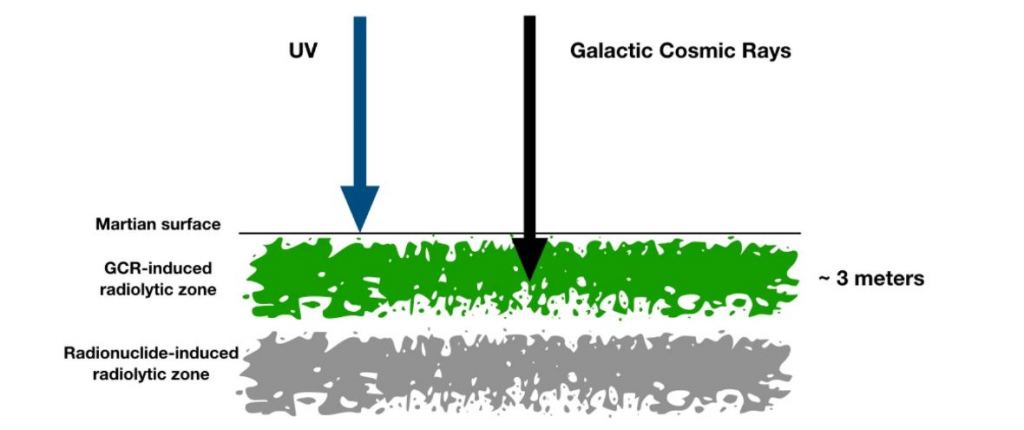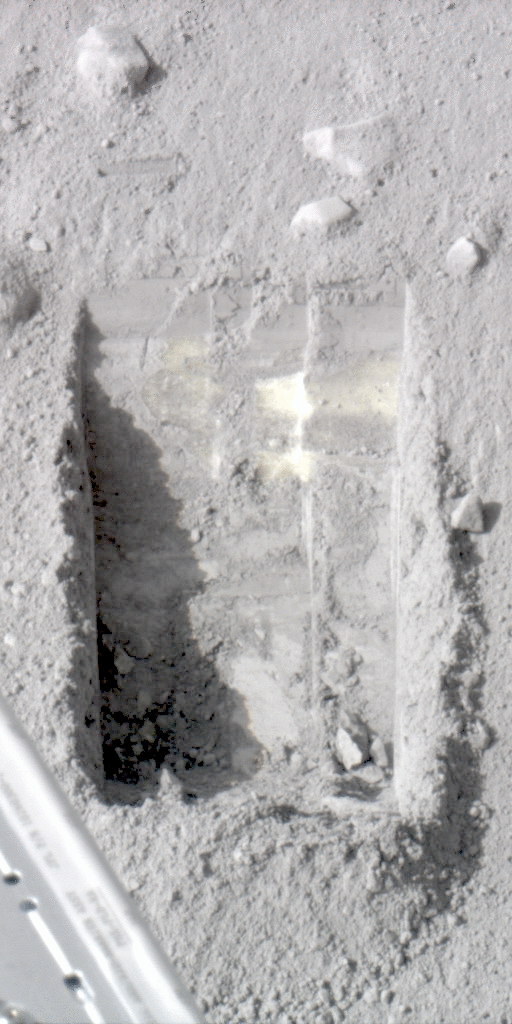Remember back in 2008 when the Phoenix lander on Mars scraped away a few inches of rust-colored regolith to reveal water ice? Or in 2009, when Mars Reconnaissance Orbiter observations revealed vast areas of subsurface ice, event at low latitudes?
These findings – and many more like them – indicate there’s a lot of interesting things going on underneath Mars’ lifeless surface. Since we know from experience on Earth that anywhere there is water, there is life, the question of life on – or under – Mars’s surface is always provocative.
Now, a new study shows that the subsurface conditions on Mars could very likely support life, and be enhanced by an unlikely source: a steady bombardment of penetrating galactic cosmic rays (GCRs). These rays just might provide the energy needed to catalyze organic subterranean activity.
Dimitra Atri at the Center for Space Science at NYU Abu Dhabi is an astrophysicist interested in planetary habitability. His new study, published in the journal Scientific Reports, investigated the biological potential of “galactic cosmic-ray-induced, radiation-driven chemical disequilibrium in the Martian subsurface environment.”
In other words, the study looked at if just the right amount of radiation could spark metabolic energy in just the right environments to support life. Atri notes that several missions and studies have concluded the subsurface of Mars has traces of water in the form of water ice and brines, and undergoes radiation-driven chemistry, so the right ingredients appear to be in place.
In his research, he used a combination of numerical models, space mission data and studies of deep-cave ecosystems on Earth. Atri used the following five basic requirements for life to potentially survive on Mars:
- Presence of organics to supply biological hardware
- a source chemical disequilibrium to supply energy for metabolic activity,
- a medium for nutrient transport, such as water,
- the ability to transform “harmful” chemical species to benign products, and
- a radiation damage repair mechanism.

He found that galactic cosmic radiation, which can penetrate several meters below the surface, will indeed induce chemical reactions that can be used for metabolic energy by extant life. Atri notes there have been similar chemical and radiation environments on Earth which support life. Additionally, once life has gotten a toehold in an environment it can survive for long periods. In fact, another new study published in the journal Science found that microbes buried beneath Earth’s sea floor for more than 100 million years are still alive.
Atri also proposes mechanisms through which life, if it ever existed on Mars, could survive and be detected with the upcoming ExoMars mission (2022) by the European Space Agency and Roscosmos.
“It is exciting to contemplate that life could survive in such a harsh environment, as few as two meters below the surface of Mars,” said Atri. “When the Rosalind Franklin rover on board the ExoMars mission (ESA and Roscosmos), equipped with a subsurface drill, is launched in 2022, it will be well-suited to detect extant microbial life and hopefully provide some important insights.”
For further info, you can find Atri’s paper here, and a press release about the study here.

